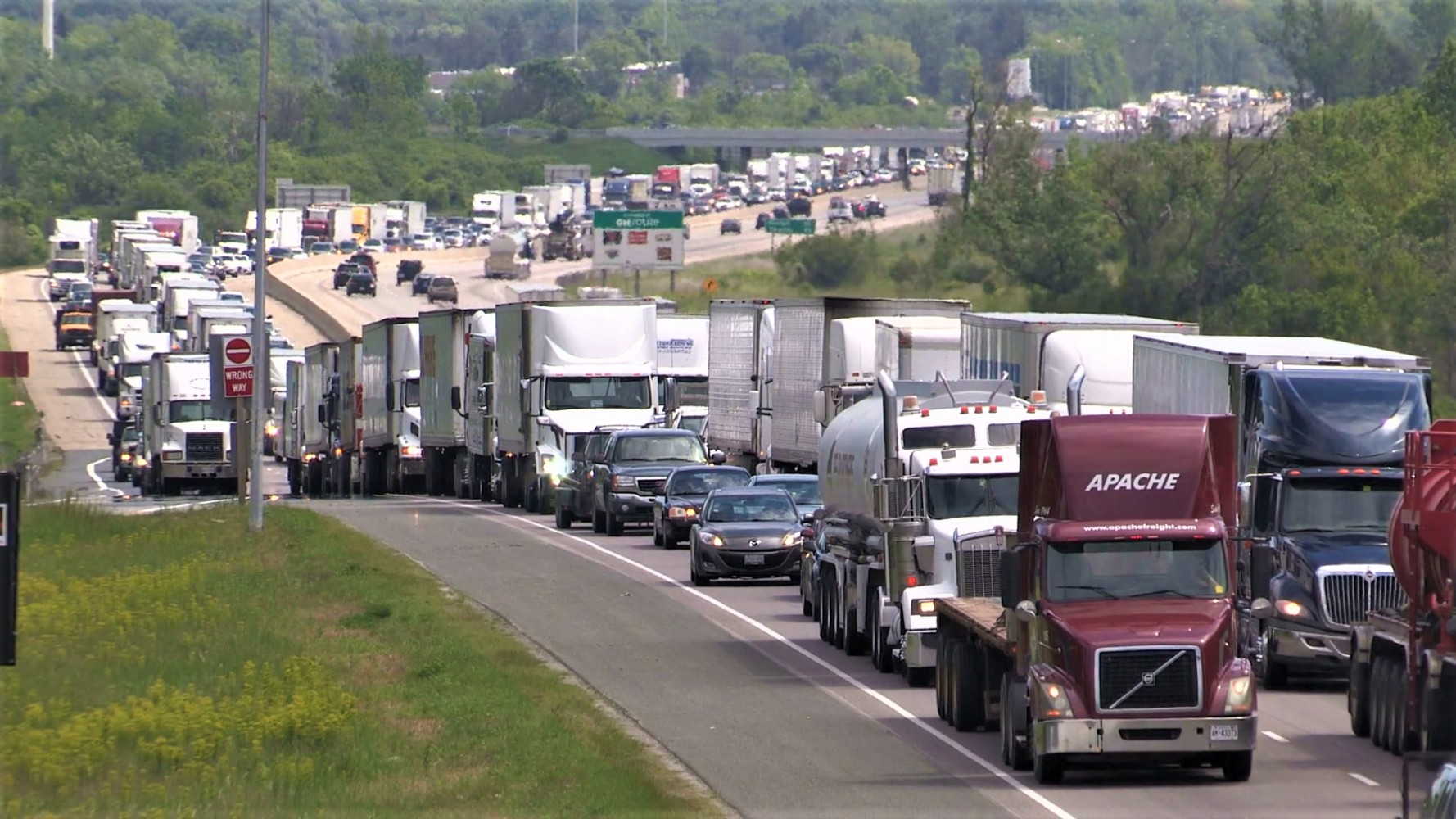
Halton leaders are fighting against Ford’s GTA West Highway; Brampton’s refuse to condemn it
To the west of Brampton, an area with half the population of Peel is fighting for the future.
Plucky Halton Region and its various municipalities are bravely squaring up to the Government of Ontario, which has steamrolled pro-development legislation through Queen's Park since the PCs took power in 2018. After one of its many recent moves that will have devastating environmental consequences, an August motion condemned the planned GTA West Corridor, also known as Highway 413, with Halton Hills councillors telling Doug Ford’s government its massive 400-series project is completely incompatible with their plans to protect future generations.
A defiant motion states that the “Council of Halton Hills adamantly opposes further investments by the Province in the GTA West Transportation Corridor.”
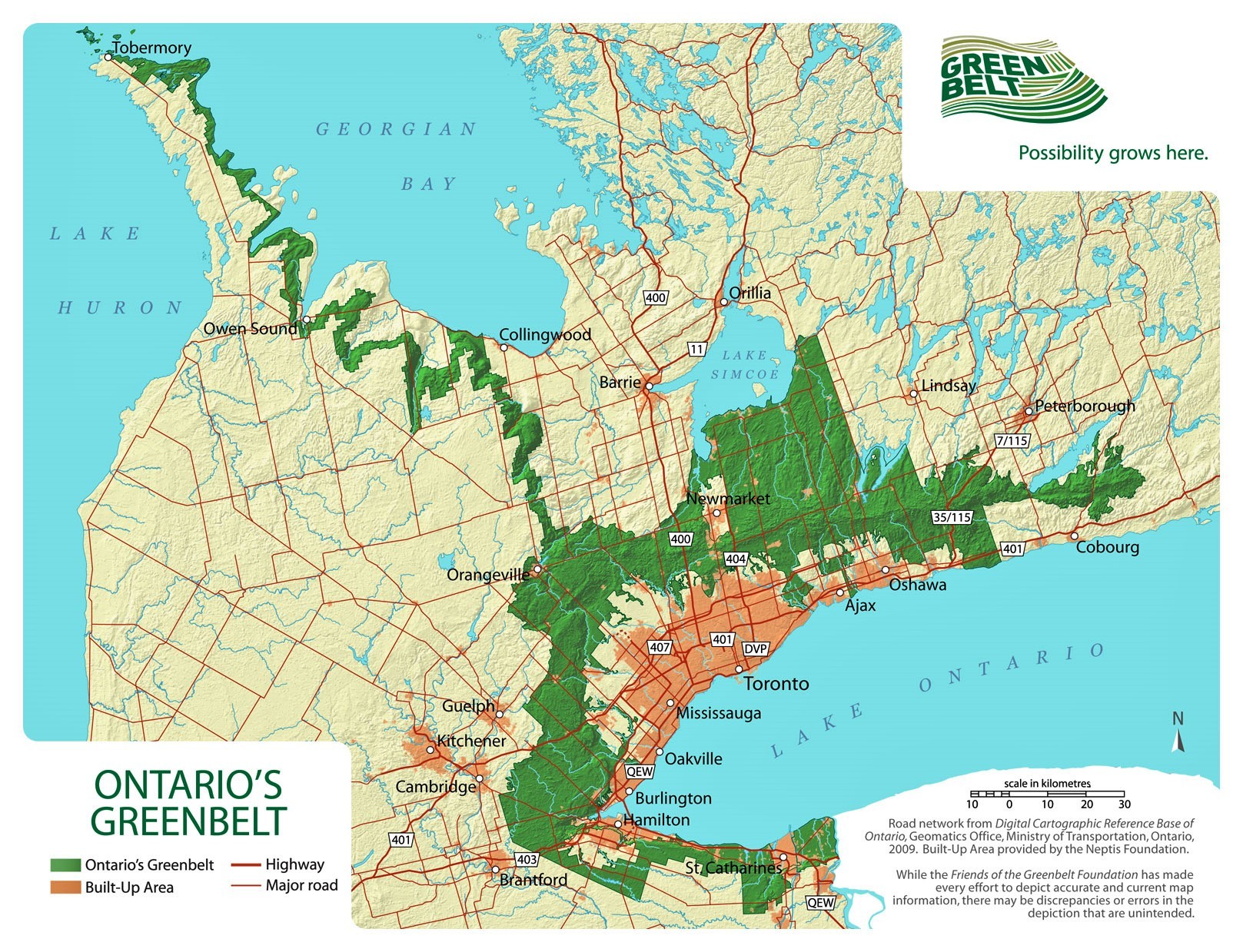
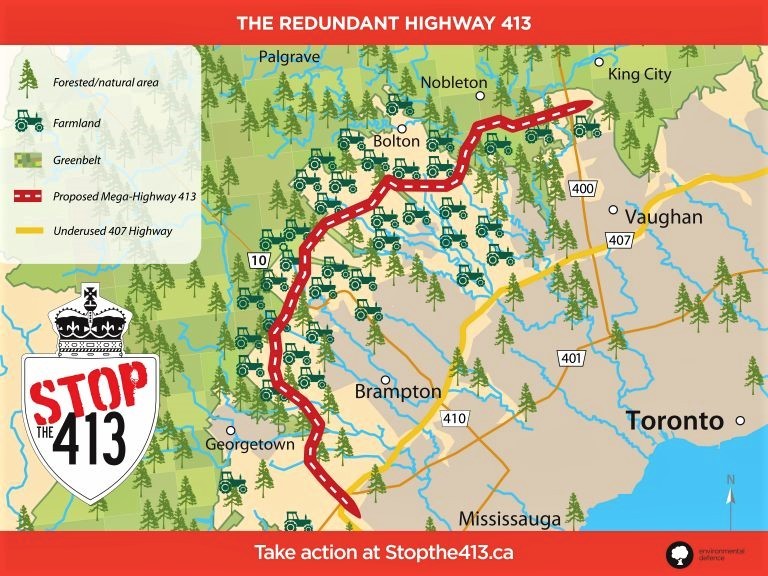
The key reason for the stand by the small municipality within Halton Region – whose council also opposes the planned highway – is the disastrous impact on the local ecosystem and the broader environment.
The highway was cancelled in 2018 by the previous Liberal government after an expert panel found it would wreak havoc on protected and agricultural land, while delivering time savings of just 30 seconds per trip.
After winning a landslide election victory, Ford and Brampton PC MPP Amarjot Sandhu rammed the project back onto the agenda, restarting its Environmental Assessment process without explaining any benefits the 413 will offer. Advocacy groups, led by Environmental Defence, have decried the devastating impact on the GTA’s remaining greenspace and begged the Province to back down.
So far, their pleas have fallen on deaf ears.
Ford has made no secret of his support for the development industry, which is dictating the highway plan at both the municipal and provincial level. Builders have already assembled much of the land along the corridor and the Province in August approved a route that will maximize the profits powerful developers are determined to make from their investments.
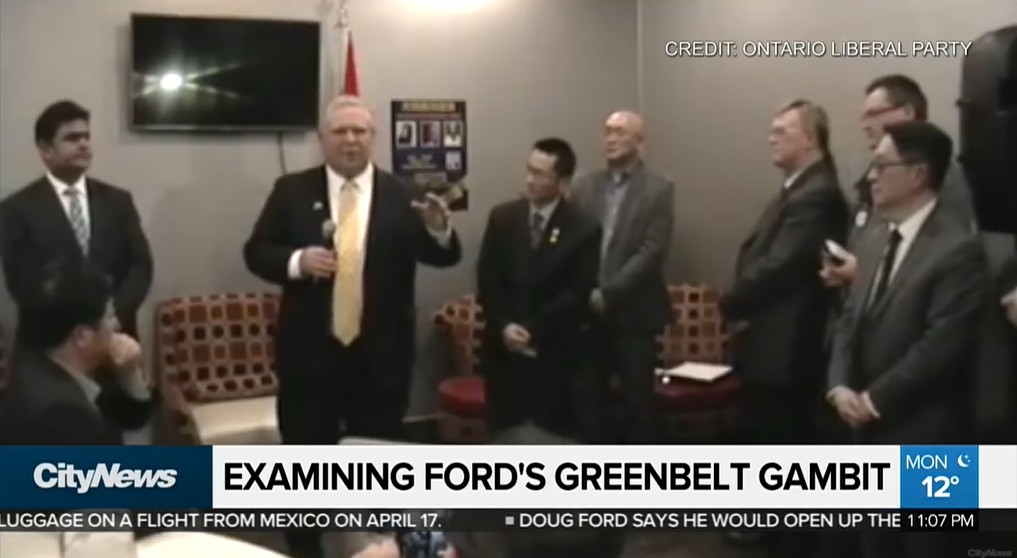
Doug Ford tells developers in a leaked video during the 2018 election campaign that he will open the Greenbelt for them: view it here
In 2013, the City of Brampton, under the leadership of former mayor Susan Fennell, who took millions of dollars in donations from developers through her campaigns and her controversial private events, entered into an unprecedented agreement.
It gave powerful developers authority over planning in the city’s northwest corner where they had assembled land for future subdivisions, which deliver tens of millions of dollars in profits to builders.
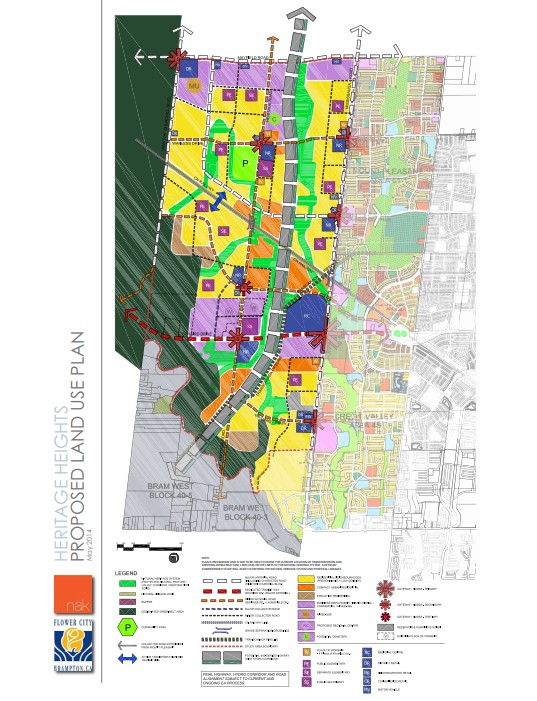
The Developer-driven plan for Heritage Heights in 2014; the grey dotted corridor representing their preferred 413 Highway route is exactly where it was placed and approved by Ford's PCs in August...
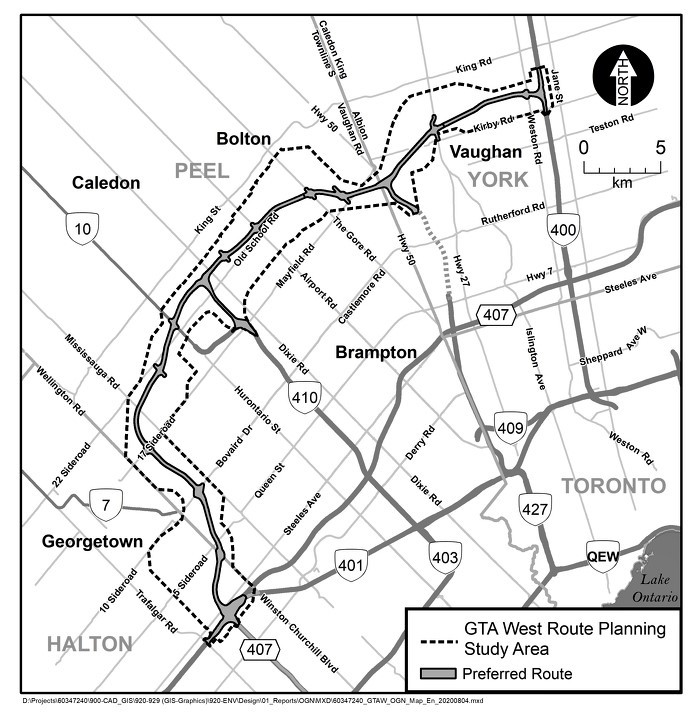
The approved 413 Highway route
Under the agreement, which involved a $2.4 million payment to the City, held in trust, they can dictate what planning studies and research the City can do in the area, and it even prevents the City from pursuing any work that would move the GTA West Highway away from the areas where they own land. Their property will skyrocket in value if the 413 corridor is built alongside, with direct access for the sprawling subdivisions the developers plan to build.
To the immediate west of the corridor, just a stone’s throw away, leaders have mounted opposition against this destructive developer-driven strategy, using a massive highway as the catalyst for their future profits.
Halton Hills’ recent opposition to the highway can be tracked back to September 2019, when the Town declared a climate emergency. It was something of a trend for governments across Canada, as a youth-climate movement, inspired by 17-year-old Swedish activist Greta Thunberg, captured headlines throughout the summer.
“When you declare an emergency, the public — to me — are looking for action. Words with no action are nothing. We have to stand by what we say,” Halton Hills Mayor, Rick Bonnette, told The Pointer Thursday. “What message does that give to the public that looks to us for leadership to declare an emergency and then in the meantime you’re going to build a $6 billion highway?”
But around Brampton and Peel’s decision-making table, that’s exactly what happened.
At both Region of Peel Council and the City of Brampton Council, members declared a climate emergency during the very same meetings when plans for the new highway were endorsed. No one during either council session raised the conflict or pointed to the hypocrisy of their contradicting actions, taken moments apart.
Brampton Mayor Patrick Brown even bragged about the highway to The Pointer last year, saying he was the driving force behind its re-emergence. “When I was the opposition leader at Queen’s Park, I put [the highway] in the platform. I personally put it in the platform,” he said in 2019.
Over the past few months, Brampton has pursued a confusing position: simultaneously claiming to support smart growth and the sprawl-inducing highway.
In a desperate attempt to appear somewhat conscious of the highway’s environmental and land-use consequences, council members are now in favour of a new boulevard concept that would run through a more dense, responsibly planned community in the city’s northwest corner, where tens of thousands of new residents will settle in the coming decades.
In May and then again in late July, Brampton councillors were presented with a plan for Heritage Heights, one of the last remaining undeveloped areas in the city. A consultant, retained by the City at a cost of roughly $90,000, outlined a vision for a transit-oriented community along the route of the GTA West Corridor.
The suggestion is to transform the proposed highway into an urban boulevard as it passes through parts of Brampton, returning to a traditional 400-series highway as it exits the urban corridor.
Twice The Pointer has asked the Ministry of Transportation if the City’s design for the boulevard is something the Province would consider. Both times, in early August and this week, the answer was no.
“The proposed roadway design is not compatible with the Province’s functional and operational objective for the GTA West corridor … [which] must meet Provincial standards for design and operating speed, access, interchange design and separation, and other 400-series highway geometrics,” the Province said in August, reiterating this week the statement “still stands”.
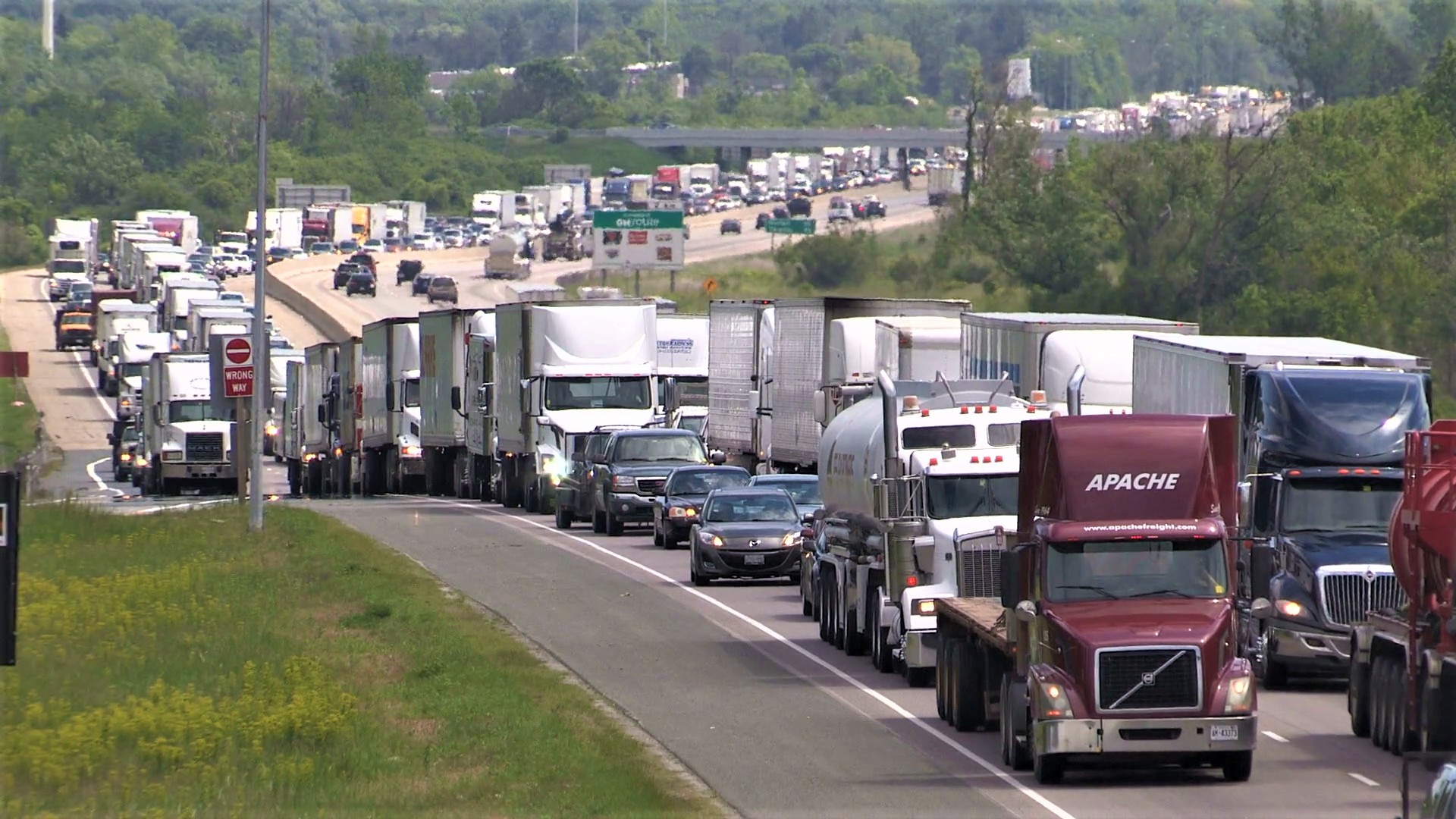
The Province is going to build this, so how could Brampton's idea for a boulevard work?
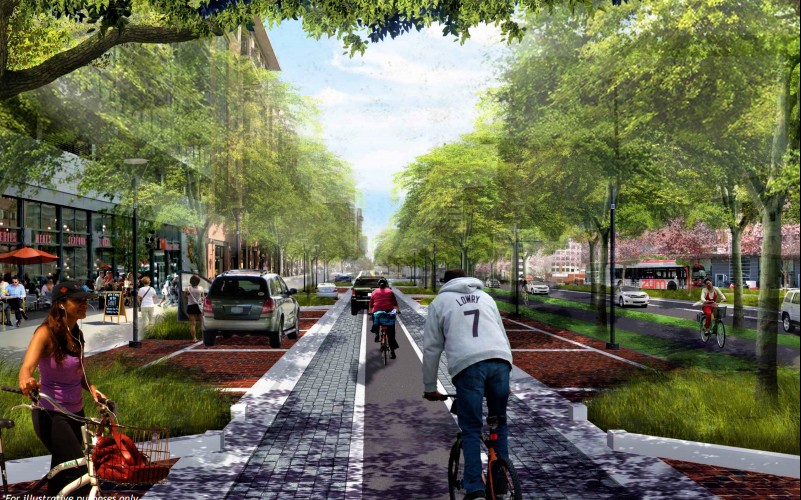
The City and its Council members say this boulevard could replace the highway design through Heritage Heights, but they can't explain how it would work and the Province says it won't.
Confronted with this reality, Brampton councillors have refused to address the roadblock, which raises questions about whether the city’s elected officials are even serious about the boulevard plan. They have extolled the virtues of their Heritage Heights proposal, but refuse to follow Halton’s lead and condemn the entire highway outright. None have even explained how a boulevard would work in the middle of a giant highway. It seems they want to hang onto their claims of supporting smart growth and the need for climate action, but realistically have no interest in these philosophies, as evidenced by their support for the highway.
On Wednesday, they doubled down on their contradictory positions, endorsing both the highway and the boulevard. A motion presented by Councillor Michael Palleschi and seconded by Martin Medeiros, Chair of the Planning Committee, resolved that council “support the GTA West Corridor with the Heritage Heights Urban Boulevard portion through the Brampton city limits.”
The motion ignored the Province’s position, that the two are incompatible. Council members and City staff have offered no explanation for how the boulevard, which would involve much slower speeds, intersecting streets, right-of-way for transit, cyclists and pedestrians and the possibility of traffic lights, could even work with a six-lane highway accommodating speeds in excess of 120 kilometres an hour.
Brampton Council took the opposite stance to Halton Hills, unanimously approving a motion that calls on the Province to “continue to advance the GTA West Environmental Assessment process” while considering the benefits of the Heritage Heights concept.
After the Province dismissed the concept as unworkable, Brown told The Pointer he had received “more encouraging” indications from Queen’s Park and the ministry, suggesting there was an openness to support the boulevard plan. He did not produce evidence of any such position by the Province when questioned and stayed silent on the topic when the contradictory motion passed Brampton City Council Wednesday.
When The Pointer went to the ministry with the mayor’s claim of receiving encouragement from the Province, it said its position still stands: the boulevard is not compatible with the Ontario government’s plan.
The City was also unable to explain how traffic on a 400-series highway could be altered into a boulevard and back again. “The City will continue to work closely with the Province to find a technical solution that prioritizes functional and operational objectives while keeping in line with the vision of the Heritage Heights community,” a City spokesperson told The Pointer, shedding no light on the technical details of the plan and offering no explanation for why the boulevard concept was pursued without support for it from Queen’s Park, which has authority over all planning around provincial highways.
The onus to prove a smart growth/highway mashup is possible would fall on staff inside Brampton City Hall and not bureaucrats and planners at Queen’s Park who have already dismissed the idea twice.

Brampton Councillor Rowena Santos and Mayor Patrick Brown like to tell the public they support climate action but simultaneously support the 413 Highway.
While councillors in Brampton are busy avoiding any real action to protect the environment and smart growth, elected officials in Halton Region have other suggestions for the dollars set aside to build the GTA West Corridor.
“What I’m hearing is we need all-day, two-way GO service… that’s where the demand is, get people off the highways,” Colin Best, a Milton and Halton Region councillor, told The Pointer. “It’s not the priority for the municipalities, the priority is getting the transit [service], getting people living and working in the same community… if people are working from home, they need high speed internet, that’s a bigger priority for people in my community than this highway is.”
Elected officials in Halton Region, including Best and Bonnette, are showing leadership on environmental and smart growth planning. Rather than simply protecting the investments of developers driving the entire highway initiative, they are looking to the big picture and amplifying what’s best to sustain their communities and what’s best for the public, in general, advocates say.
“I think councillors wear many hats. I think one of those hats is definitely to listen to their constituents and feel the pulse of where they’re at on a specific decision, talk to as many stakeholders as possible,” Sarah Buchanan, Program Manager, Clean Economy at Environmental Defence, told The Pointer. “Another hat that councillors wear is that public education hat. [It is] doing that research and finding out what are some of the maybe hidden or deeper or more long-term impacts that aren’t in the public dialogue right now that people might not understand about this project… Being a little bit of a guardian of the community that you’re in and their well being.”
In Halton Region, that research and long-term thinking has thrown up much more pressing priorities. High speed internet for home-based school and major expansion of public transit throughout urbanizing areas of the 905 are two options local politicians there see as more future proof than a highway plucked straight from the post-war planning handbook.
Buchanan and Environmental Defence have produced ample research to show the 413’s claimed benefits will not materialize: it will create more congestion, not less; it will not help with goods movements in an economy moving toward service and knowledge-based enterprise; and it will not bring down housing prices through the sprawling subdivisions built around its corridor.
However, it will devastate the local ecosystem, encroach on the protected Greenbelt, disrupt the headwaters that flow south to Lake Ontario, cause massive local species loss and send thousands of tons of carbon into the surrounding airshed.
While Brampton Council members ignore all of this, despite their so-called climate emergency declaration, often trumpeted by Councillor Rowena Santos, who has simultaneously refused to condemn the highway, their counterparts to the west are mounting a public movement against Ford’s developer-led planning.
Discussing the project, Mayor Bonnette recounted advice he had been given many years ago. “Politicians, for the most part, only make decisions for the four, five, maybe ten year [horizon],” he said. “Basically around their term in office … Your decisions today should be made for five generations from now.”
Email: [email protected]
Twitter: @isaaccallan
Tel: 647 561-4879
COVID-19 is impacting all Canadians. At a time when vital public information is needed by everyone, The Pointer has taken down our paywall on all stories relating to the pandemic and those of public interest to ensure every resident of Brampton and Mississauga has access to the facts. For those who are able, we encourage you to consider a subscription. This will help us report on important public interest issues the community needs to know about now more than ever. You can register for a 30-day free trial HERE. Thereafter, The Pointer will charge $10 a month and you can cancel any time right on the website. Thank you.
Submit a correction about this story


